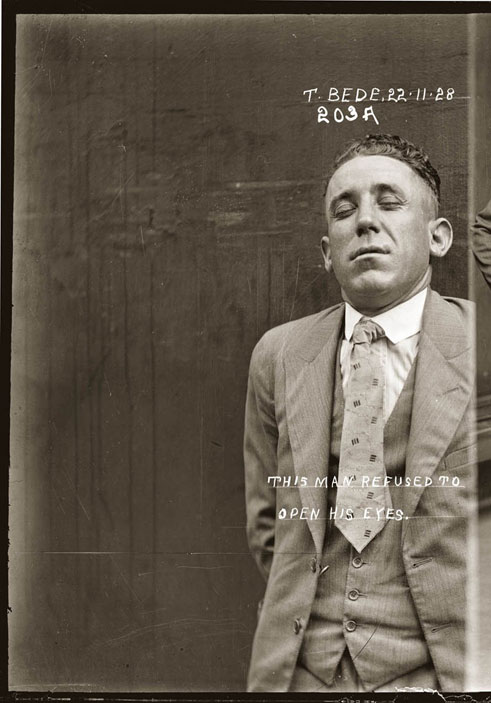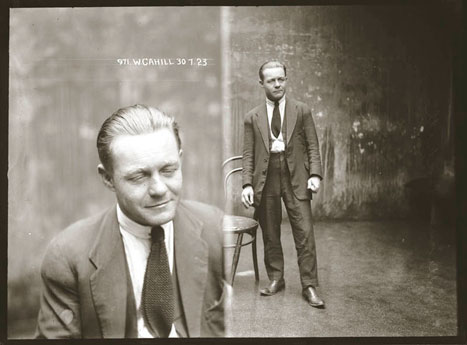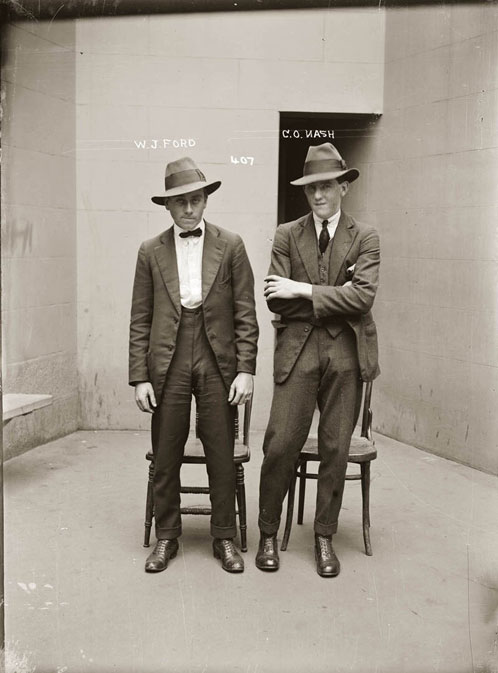Collection of 1920s Vintage Police Mug Shots Are Striking, Timeless Portraits
posted Wednesday, April 25, 2012 at 1:00 PM EST
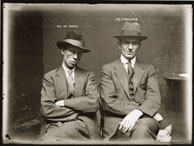 During the 1920s, a photographer working for the Sydney Police Department in Australia took mug shots of all newly arrested suspects. This anonymous photographer created a series of images that are powerful portraits and also a remarkable historical record.
During the 1920s, a photographer working for the Sydney Police Department in Australia took mug shots of all newly arrested suspects. This anonymous photographer created a series of images that are powerful portraits and also a remarkable historical record.
Comparing these vintage images to modern mug shots, the differences between the 1920s and the 2010s are striking. From the image of a dismayed and old looking Dominique Strauss-Kahn to a drunk and wasted Nick Nolte, modern mug shots, particularly of the famous, convey the message “look how far the mighty have fallen.” They are like ancient Greek morality play that reassures us that even the powerful can be brought down by their greed and lust.
Looking at these 1920s mug shots there is also a reminder of how profoundly photography had changed the world.
Prior to 1840, it was only the rich and powerful who could afford to have their portraits done. Photography eventually made it possible for ordinary people to have portraits as well but it remained a special event. The photographer and their magical, high tech studio full of lighting and tripods was like a painter’s atelier.
Even for these Australian criminals having their mug shots taken was special. Perhaps a sign of accomplishment so it was important to look good and to be at one’s most stylish and dapper. A first arrest was a rite of passage and an important step in a criminal career. We have to look no farther than the 20th century’s own “Dapper John” Gotti to see proof of that.
Remarkable Lighting
From a photographer’s point of view, the vintage mug shots are remarkable for their lighting. It is diffuse, rather soft and it gives the faces and bodies a quality of roundness and weight. That is a far cry from modern mug shots with their brutally harsh lighting that makes a suspects look the worse for wear, driving home the certainty of their guilt.
This kind of broad lighting was typical of studio photography in the 1920s and 1930s as can be seen in Arkansas photographer Mike Disframer’s, “Heber Springs” photographs.
Many of the vintage mug shots had short descriptions of the suspects and their crimes written on them by the photographer. These commentaries are often surprising.
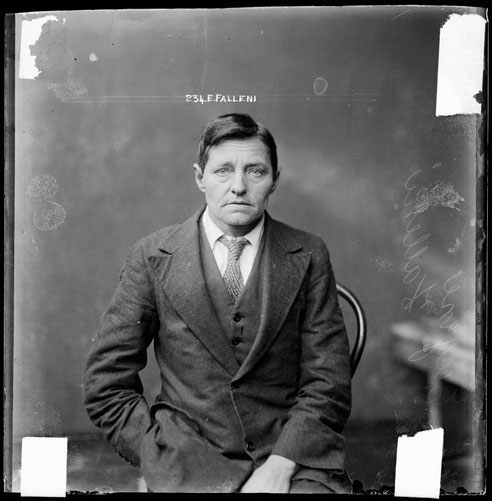 At first glance, the image on the right of E. Falleni's worn and tired face looks like that of a factory worker. But it turns out that the E. stands for Eugenia and she had been passing as a man since 1899. In 1914, as "Harry Crawford," she married the widow Annie Birkett, who after announcing to a relative that she had discovered "something amazing about Harry," disappeared.
At first glance, the image on the right of E. Falleni's worn and tired face looks like that of a factory worker. But it turns out that the E. stands for Eugenia and she had been passing as a man since 1899. In 1914, as "Harry Crawford," she married the widow Annie Birkett, who after announcing to a relative that she had discovered "something amazing about Harry," disappeared.
Cryptically scratched into the emulsion of another photo (below) are the words “this man refused to open his eyes.” The small act of rebellion brings this image of one Thomas Bede to life; reminding me of something I had once read, “vividly legible in historical photographs: there is always a defeat of Time…” (Roland Barthes, Camera Lucida, 1980)
Thomas Bede is long dead although in this image, he, like the others, is strikingly alive. They all had lots of life ahead of them when they were photographed yet we know that they all died long ago. They are both alive and dead to us, which creates a feeling that Bathes names,“the vertigo of Time defeated.”
You could say that these vintage mug shots are a reminder that was our job as photographers may be to defeat time itself.
There are 30 mug shots from the Sydney collection that you can see at The Sydney Justice & Police Museum. They're also featured at TwistedSifter.com.
